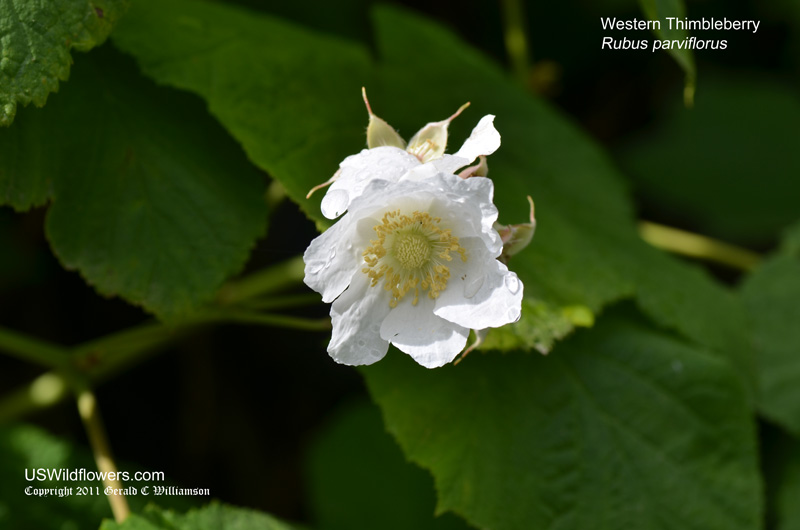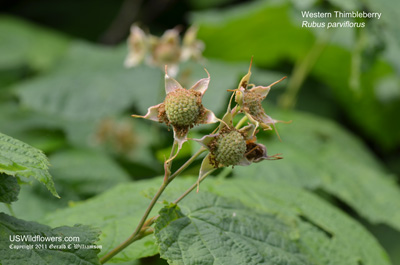Wildflowers of the United States | |||||||||||||
| |||||||||||||
Rubus parviflorus - Thimbleberry, Western Thimbleberry, Salmonberry, Mountain Sorrel, White Flowering Raspberry, Western Thimble Raspberry. Western Thimbleberry is a native of the western part of the United States, and the north central region as far east as Michigan. There is a disjunct population in Massachusetts; I would suspect that this is a naturalized population rather than indigent. | When I photographed this I had hoped it was Bartonberry - Rubus bartonianus - a Rubus species found only in Hell's Canyon. While similar, the easy access location of this plant (Kleinschmidt Grade) didn't match to any of the known locations of Rubus bartonianus, and the leaves are somewhat different, so that left me with Thimbleberry rather than Bartonberry. Thimbleberry is also a common name for an eastern Rubus species, Rubus odoratus. Found in: AK, AZ, CA, CO, IA, ID, IL, MA, MI, MN, MT, NM, NV, OR, SD, UT, WA, WI, WY Leave comments on Rubus parviflorus at this link.   Map courtesy of The Biota of North America Program. Map color key Search Our Database: Enter any portion of the Scientific, Common Name, or both. Do a general Google search of the entire site: #ad
| #ad
| | ||||||||||
|
Commercial / Cookie Notice Looking for Wildflowers for a specific state? Check here: | |||||||||||||
|
All content except USDA Plants Database map Copyright Gerald C. Williamson 2024 | |||||||||||||
Code Update 20230302



